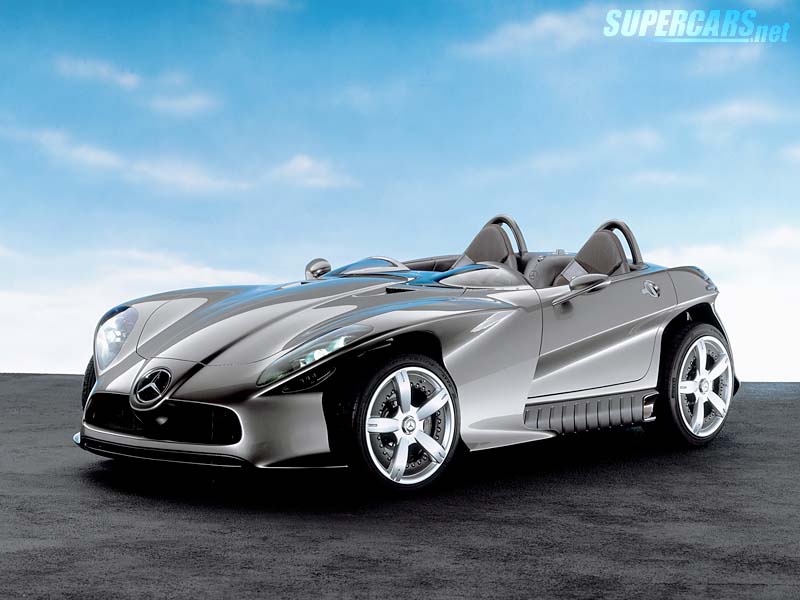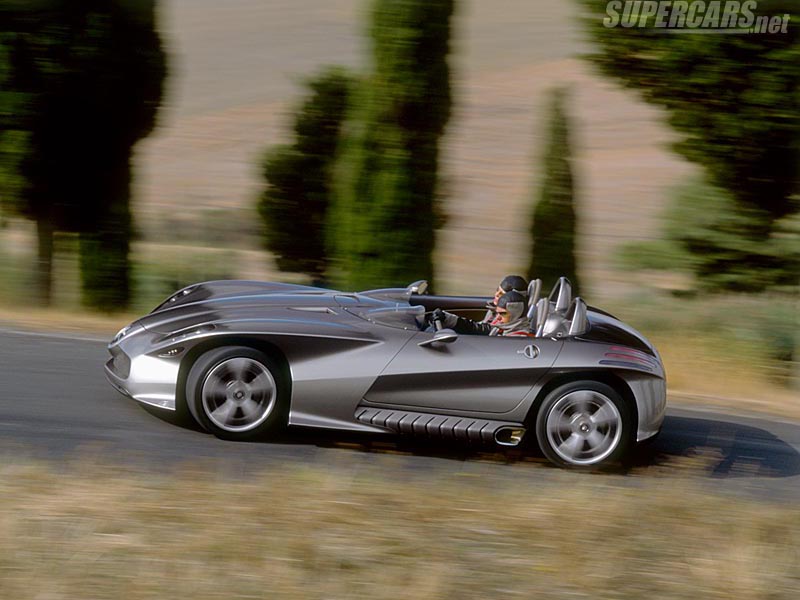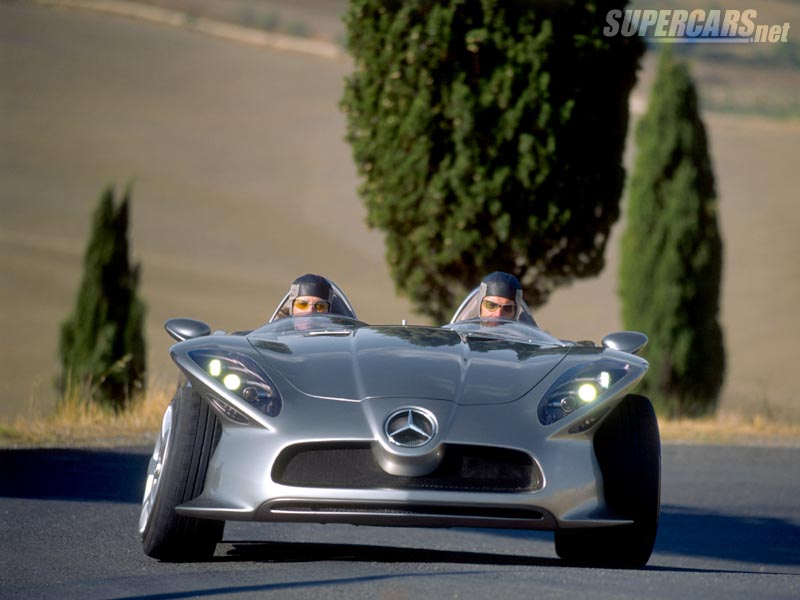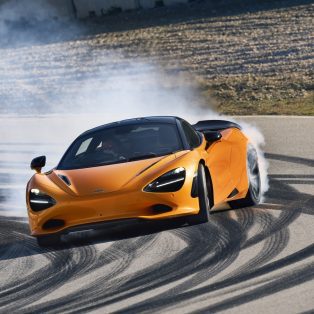2001 Mercedes-Benz F 400 Carving Concept
DaimlerChrysler is exhibiting a special concept at the 35th Tokyo Motor Show: the F 400 Carving is a vehicle packed with dynamic systems designed to give the car enhanced active safety & dynamic handling control. The F 400 houses a new system that varies the camber angle on the outer wheels between 0 and 20 degrees depending on the road surface. Used in conjunction with newly-developed tires, it provides 30 percent more lateral stability than a conventional system with a fixed camber setting and standard tyres. This considerably enhances active safety, since better lateral stability equals improved road adhesion and greater cornering stability.
Active camber control boosts the research vehicle’s maximum lateral acceleration to 1.28 g, meaning that the concept study outperforms current sports cars by some 28 percent.
The active camber control in the F 400 Carving paves the way for an equally new asymmetrical-tread tyre concept. When the two-seater car is cornering, the outer wheels tilt inwards, leaving only the inner area of these tyres in contact with the road. This area of the tread is slightly rounded off. Meanwhile both the tread pattern and the rubber blend have been specially selected to ensure highly dynamic and extremely safe cornering. When driving straight ahead, however, it is the outer areas of the tyres that are in contact with the road. These areas have a tried-and-tested car tread pattern, offering excellent high-speed and low-noise performance. Two different concepts therefore come to fruition in a single tire, thanks to active camber control.
In Detail
| submitted by | Richard Owen |
| type | Concept / Prototype Car |
| built at | Germany |
| coachbuilder | Coggiola SpA |
















